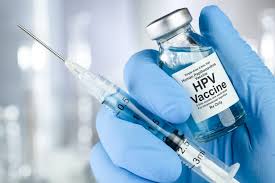

Murang’a county health officials have raised concern over a drastic fall in the uptake of the human papillomavirus vaccine among girls.
This trend, the health practitioners warned could reverse
progress made in the fight against cervical cancer.
County vaccinations coordinator Veronica Kang’ethe said less than a quarter of eligible girls received the HPV jab in 2024.
“Data shows that only 18.72 per cent of girls between 10 and 14 years got the first dose (HPV1) while 27.43 per cent received the second dose (HPV2),” she revealed during an immunisation stakeholders' meeting held on Wednesday in a Murang’a hotel.
The rate Kang’ethe said, marks a steep decline from 2023, when uptake stood at 53 per cent for HPV1 and 37.31 per cent for HPV2.
“This is worrying because cervical cancer remains one of the leading causes of death among women, yet it is largely preventable through HPV vaccination,” she said.
Kangeth'e explained that myths, misinformation and hesitancy among parents have slowed down HPV coverage, unlike other childhood vaccines, which have seen relatively higher uptake.
“For instance, more than 80 per cent of children in Murang’a received the pentavalent vaccine in 2024, and 76 per cent got the measles-rubella jab,” she said.
However, Kang’ethe stressed that HPV prevention is just as critical, since the virus is linked to nearly all cervical cancer cases.
She urged school managements, members of the clergy and community leaders to support the immunisation campaign promoted by the government noting the vaccine is safe and has been proven to protect girls later in life.
“Parents must understand that HPV vaccination is not about encouraging early sexual activity, it is about shielding their daughters from cancer in the future,” she said.
With coverage for HPV vaccines dropping at a time when other vaccines are recording steady gains, Kang’ethe urged Murang’a parents to embrace all vaccines offered under the National Vaccines and Immunisation Programme (NVIP).
The programme currently provides protection against more than 14 childhood diseases, including polio, malaria in selected counties, and rabies, as well as specialised products like anti-snake venom.
She stressed that the aim of the programme is not only to save lives today but also to protect future generations.
“If we do not act now, we risk reversing the progress we have made in protecting our children and our communities,” she said.












